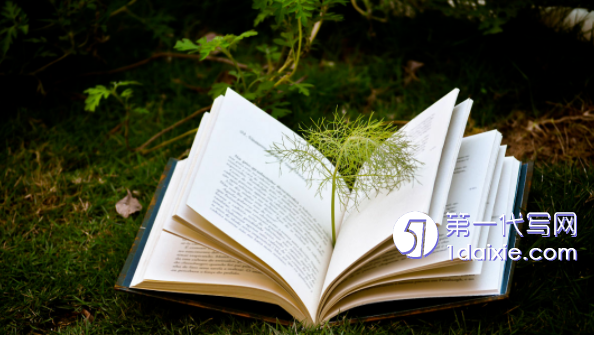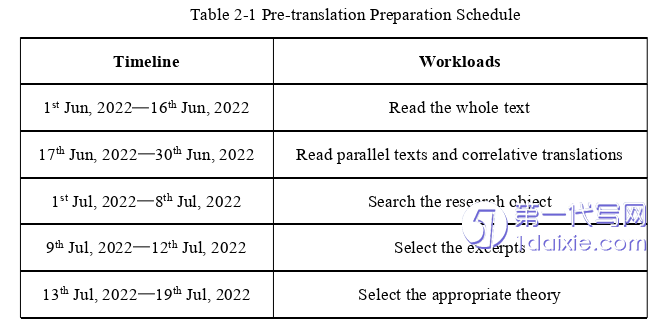本文是一篇英语论文,笔者在姚斯和伊瑟尔的接受美学理论的指导下,探讨该小说对话翻译的技巧。接受美学理论注重读者在阅读文本时的感受,以读者为中心,将读者的先前经验,文化知识等内容纳入考虑,能够让读者充分理解原文表达的内容,有利于读者更好把握文本内容。
1 Task Description
1.1 Background of the Task
The novel Sea of Tranquility is written by Emily St.John Mandel,introducingthe future life about time travel.A few chapters of this novel are selected to betranslated,which mainly introduces the preparation for unveiling the secret of time.
In the human science history course,science fiction plays an indispensable rolein providing endless invention spirit for scientific researchers.Science and technologyare the primary productivity.Thus,in the new journey,China needs to especiallyfocus on scientific development to realize high-quality development.The authorhopes that translating the latest science fiction is able to contribute her little power.

1.2 Choice of the Text
The text is a science fiction about time travel that triggers people’s thinking onthe relationship between science and ethics,which warns people not to go against the natural law.With the rapid development of the science and technology,a wealth ofgreat achievements have been made by leaps and bounds such as tube baby,cloningtechnology and so on.However,while science and technology bring about muchconvenience to people,ethical issues cannot be ignored.For centuries,people havebeen debating whether it is possible to realize time travel,which is people’s beautifulimagination about the future life.The vast majority of people have various regrets intheir lives,which are expected to be changed or made up by time travel.This bookmakes people reckon whether time travel can make up for their regrets and make themcherish time.
Literary translation has always been a focus of research in the academic fieldand improving its translation quality is an eternal pursuit of translator,and the authorhopes to commit herself to the exploration of this field.Besides,the language of thetext is moderately difficult for postgraduate students,so it is adequate and reasonablefor the author to conduct research.
2 Process Description
2.1 Pre-translation Preparation
The pre-translation preparation played a prominent role in the whole translationprocess.The schedule is clearly presented in the table below.

2.2 Translation Process
After the pre-translation preparation,the translator started to translate the targettext based on the general understanding of the text and some background information.A table helps to know the translation process clearly.
The translation process is an imperative and pivotal step during the translationso it determines the quality of translation.After evaluation according to the numberand difficulty of the source texts and the actual situation of translators,it was planned that the daily translation volume was about 500 words.In the specific translationprocess,due to the translator’s reasons,the translator sometimes failed to completethe planned amount of the day.For this,the specific solution was to divide theunfinished task amount of the day into the next workload to ensure that the translationtask can be completed on time.After translating several original texts,the translatorneeded to go back,in order to check the previous translation,and correct anymistranslation or omission in time.The translation process was also a learning process,and problems would be found constantly.For the translation that was not sure before,the translator can deepen her understanding and then tried her best to translateaccurately.
3 Case Analysis ................................ 10
3.1 Theoretical Framework ............................................ 10
3.1.1 Brief Introduction to Reception Aesthetics Theory ................... 10
3.1.2 Application of Reception Aesthetics Theory ............................. 13
4 Conclusion ................................................ 37
4.1 Major Findings ................................. 37
4.2 Limitations ......................................... 38
4.3 Suggestions ...................................... 39
3 Case Analysis
3.1 Theoretical Framework
This report adopts reception aesthetics theory as the theoretical framework.This part offers an overview of the reception aesthetics theory,to pave the way for thefollowing analysis of translation examples.This chapter consists of two segments dueto the length of the thesis:brief introduction to reception aesthetics theory andapplication of reception aesthetics theory.
3.1.1 Brief Introduction to Reception Aesthetics Theory
Reception aesthetics theory was put forward by Hans Robert Jauss andWolfgang Iser in the 1960s when there were two major philosophical schools inEurope:philosophical hermeneutics and the social criticism theory of the FrankfurtSchool.The aesthetic theory at that time was influenced by the mainstreamphilosophical schools and gradually deviated from society and reality,making theoryand social reality disconnect.The reception aesthetics theory was born under thisbackground,which combines literary theory with positivism,focusing on therelationship between historical events and historical backgrounds in literary works,aswell as the relationship between characters and authors in literary works,and transfers the research focus of literary works to the reception and social effects of the worksthemselves.Besides,the translator should take the acceptability into consideration.Some main points of reception aesthetics theory are discussed as following:
4 Conclusion
4.1 Major Findings
Through the translation practice,taking the reception aesthetics theory astheoretical support the translator has come up with three main translation techniquesincluding adaption,addition and division to improve the dialogue translation.
In this thesis,adaption is used when the source language expression is differentfrom the target language expression habit or form considering the readers’feelingswhich is the core content of the reception aesthetics theory.Besides,readers alsohave certain aesthetic expectation of the work before reading.Therefore,by using theadaption technique,the translator strives to use colloquial words instead of formalwords and use initiative sentences and interrogative sentences at the syntactic levelconsidering the specific situation.The adaption technique helps the dialogue close toreal life making readers understand the content better.
Addition is used to add the content which is omitted,like some auxiliarywords,particle words and conjunction words in this thesis.By adding the content,thedialogue is full of colloquialisms conforming to the characteristic of the dialogue.What’s more,adding omitted content brings detailed content to readers and gives them a more clear understanding,which also satisfies the focus of reception aestheticstheory which is readers’subjective receptivity.
reference(omitted)
